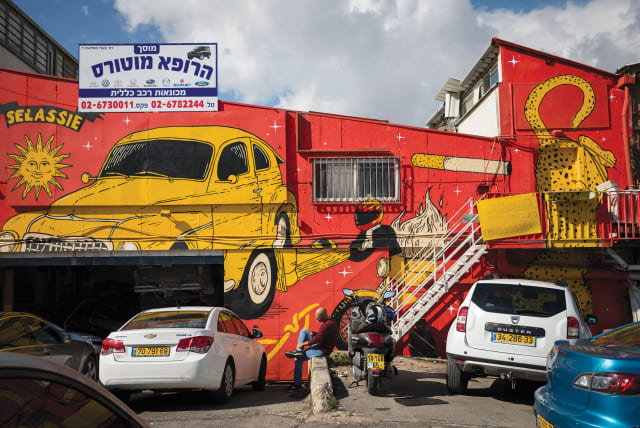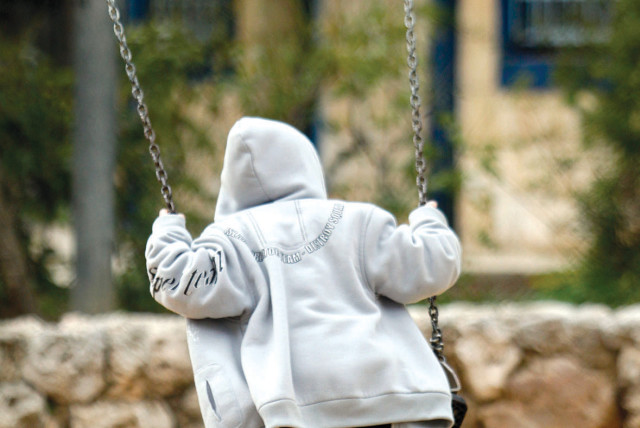This week in Jerusalem: Keep in touch

A weekly round-up of city affairs.
Keep in touch
Netivei Israel – National Transport Infrastructure Company and cellular company representatives have signed an agreement ensuring that the entire length of Route 16 and its tunnels, which opened eight months ago, will be linked up to cellular communication within three months. The road is a significant entrance to Jerusalem, with tens of thousands of vehicles passing through it every day, and an integrated team led by the Communications Ministry was established to examine the issue. Cellular infrastructure is essential for both lifestyle and lifesaving purposes.
Residents’ protest, take 1
Har Homa residents are protesting the decision to establish a temporary police station in the heart of the residential neighborhood instead of the playground located there. According to the police, the plot is owned by the municipality, so the decision is legal.
The residents say there were surprised to discover that a number of trailers were stationed at the entrance to Eliyahu Koren Street. An investigation of the matter revealed a plan to operate an alternative police station instead of the one that operated for years in the square at the entrance to the neighborhood. The residents are protesting against what they claim obstructs their living environment, in a move they describe as a robbery done in the dead of night.
Chaos and traffic
Fear of traffic chaos is disturbing residents near the Bar-Ilan junction, with the changes in traffic arrangements and public transportation. As part of the infrastructure works for the construction of the light rail’s Blue Line and the preparation of an underground station in Bar-Ilan, earlier this week the works at the intersection moved to another quarter. As part of the changes, lanes will be blocked and public transportation lines will change their routes.
Residents of the north of the city (Ramot, Pisgat Ze’ev, Neveh Ya’acov and French Hill) and the main urban center and the haredi Central Business District (Ma’ar) have been warned that starting this week, significant changes are expected in the traffic arrangements on the Bar-Ilan axis, changes that will greatly affect life, traffic and public transportation routes.
According to the work method, in order not to block the intersection completely, the works were divided into four quadrants, and in each of them the work is expected to last several months. After the work in the first quarter was completed before Passover, the work is moving now to the next quarter, in the northeastern part of the Bar-Ilan junction, and then the left turn from Bar-Ilan Street to Shmuel Hanavi, the right turn from the Harel Brigade to Shmuel Hanavi in the direction of Golda Meir Boulevard and the left turn from Shmuel Hanavi (for those coming from the direction of Golda Meir) to the Harel Brigade will be canceled. It will be possible for private vehicles to go straight from Shmuel Hanavi Street toward Golda Meir Boulevard in both directions, as well as right-hand traffic from Shmuel Hanavi to the Harel Brigade road. Movement to the left from Yirmeyahu to Eli Hacohen will be allowed a day later.
A few hours after the changes in the traffic and public transportation arrangements at the Bar-Ilan intersection were launched, four young people were injured in two different traffic accidents at the intersection. Medical teams took them to hospitals.
Street art here
Jerusalem joins the list of cities boasting street art, as Talpiot is morphing into an urban gallery of wall paintings.
At the initiative of Mayor Moshe Lion and the municipality through the Eden Company, the auxiliary company for urban development in Jerusalem, this project aims to change the neighborhood’s image and physical spaces. Talpiot is turning from an industrial and craft area into an area with multiple uses: commerce, offices, residences and culture. With colors replacing the grayness, alongside hi-tech companies, shopping malls, artist studios and garages, Talpiot offers a fascinating alternative scene, which has become an attraction, especially since it is suitable for everyone – couples, families and children.
Eden initiated the mural painting project in Talpiot, which started three years ago. In addition, the Jerusalem Municipality holds quite a few cultural events in the neighborhood. As a result, it has a developed a cultural-artistic scene, as the murals fit in perfectly and are an opportunity for an unmediated encounter with art in everyday life, with which everyone can connect. They allow those who are not used to going to museums to meet art and receive from it everything it has to offer, in terms of messages and in terms of aesthetics, colors and style.
The walls of the buildings of this industrial area built in the 1970s are mostly covered with cement or plaster, rendering huge canvases that can accommodate the giant murals.
End of an era
The last corona department in Israel, operating at the Herzog Medical Center, was closed last week, putting an end, hopefully, to the pandemic era. The department operated at Herzog continuously from August 2020 onward and during the epidemic treated some 2,000 patients. Most of them arrived in serious condition or with significant underlying illnesses. With its closure, there will no longer be a dedicated in-patient ward for corona patients in Israel. Going forward, if people are infected with corona and require hospitalization, they will be admitted to normal hospital wards. Herzog is the oldest hospital in Israel. Established in 1894, it has been managed as a public nonprofit. ❖
Jerusalem Post Store
`; document.getElementById("linkPremium").innerHTML = cont; var divWithLink = document.getElementById("premium-link"); if (divWithLink !== null && divWithLink !== 'undefined') { divWithLink.style.border = "solid 1px #cb0f3e"; divWithLink.style.textAlign = "center"; divWithLink.style.marginBottom = "15px"; divWithLink.style.marginTop = "15px"; divWithLink.style.width = "100%"; divWithLink.style.backgroundColor = "#122952"; divWithLink.style.color = "#ffffff"; divWithLink.style.lineHeight = "1.5"; } } (function (v, i) { });

